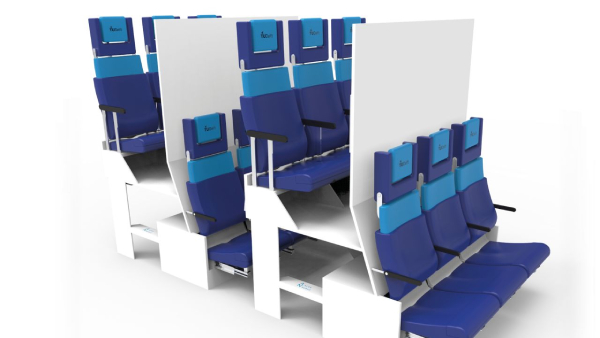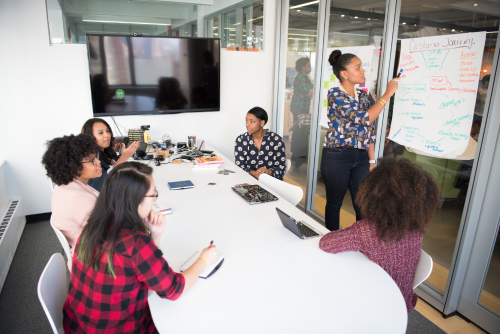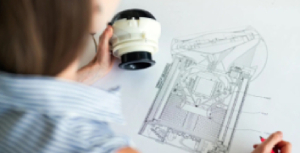
New Zealand's design industry is known for its innovative and creative approach to product design. Collaboration and user-centred design are integral to the country's design process, helping designers create functional and visually appealing products while meeting consumers' needs. By prioritising collaboration and user-centred design, designers can create functional and visually appealing products, resonate with consumers, and stand out in a competitive market.
Product Design Collaboration
Collaboration involves working closely with other experts, such as engineers, manufacturers, or marketers, to ensure that products are well-designed and positioned in the market. The relatively small size of the design community in New Zealand means that collaboration is often essential, with designers working closely with other experts to bring their ideas to life.
Collaboration is essential in product design for several reasons.
1. Collaboration allows designers to combine expertise and knowledge to solve complex design problems.
Designers may collaborate with engineers, manufacturers, materials scientists, or other specialists to ensure their designs can be produced efficiently and reasonably. By collaborating with other experts, designers can create products that are aesthetically pleasing but also functional, reliable, and easy to manufacture.
2. Collaboration lets designers get feedback on their designs from different perspectives.
This feedback can help designers to identify potential flaws or areas for improvement, leading to better design outcomes. Additionally, collaboration can help designers identify new opportunities and explore new ideas they may not have considered otherwise.
3. Collaboration helps to ensure that products are well-positioned in the market.
By working with marketers, business experts, or other stakeholders, designers can ensure that their products are well-suited to consumers' needs and preferences. Collaboration can also help designers identify potential challenges or risks associated with bringing a product to market, allowing them to make informed decisions and create more likely successful products.

User-Centred Design (UCD)
User-centred design (UCD) is an approach to product design that prioritises the needs and preferences of the end user. This involves gathering insights into the user's behaviours, goals, and pain points and incorporating this information into the design process to create intuitive, easy-to-use products that meet the user's needs.
The importance of UCD lies in its ability to create products that are well-suited to the needs of consumers. By prioritising the user's perspective, designers can create products that are functional and also enjoyable to use. This can increase user satisfaction, brand loyalty, and sales and revenue.
Additionally, UCD can help to identify potential design flaws or challenges before a product is brought to market. By gathering fuser feedback throughout the design process, designers can make informed decisions and create products more likely to succeed.
UCD and Collaboration: Key Trends and Opportunities
User-centred design and collaboration are important trends in New Zealand that offer significant opportunities for businesses and organisations to create more effective, sustainable, and inclusive solutions.
3 Key Trends in User-Centered Design
User-centred design (UCD) is becoming increasingly important in New Zealand as businesses and organisations recognise the value of designing products, services, and experiences that meet the needs and preferences of their users. This approach involves understanding user behaviours, attitudes, and needs through research, feedback, testing, and designing solutions that address those needs.
1. Cross-Sector Partnerships
There is an opportunity for businesses and organisations to partner with government agencies and non-profits to design solutions that address complex social and environmental challenges.
2. Co-Design With Users
Involving users in the design process can lead to more effective solutions that meet their needs and preferences. There is an opportunity for businesses and organisations to work closely with users to co-design solutions that address their specific needs.
3. Collaborative Innovation
By working together, businesses and organisations can leverage their collective expertise to innovate and develop new solutions that may not be possible through individual efforts.
Conclusion
When collaboration and user-centred design are combined, they can result in more effective, sustainable, and inclusive products. Collaborative design teams can leverage their expertise to identify and solve complex design problems. In contrast, the user-centred design ensures that the end product meets the needs and preferences of the intended users.
By working collaboratively and incorporating user-centred design principles into their product design process, New Zealand businesses and organisations can develop effective and innovative products and contribute to a more sustainable and inclusive society. Ultimately, collaboration and user-centred design are critical to the success of New Zealand's product design industry and the development of products that meet the needs of its diverse population.
About Pro-Dev
Pro-Dev is your One-Stop Solution for all your Product Design and Consultancy needs. Pro-Dev ensures the highest quality standard and uses independent compliance testing labs to meet compliance requirements for all the markets where the product will be sold (USA, EU, AU, NZ, Canada).
When your company needs the best industrial design, consider looking for a team that delivers excellence with every project. Pro-Dev offers start-to-finish services that transcend simple build specifications to create trustworthy solutions for your brand. Our one-stop solution to industrial and product design in New Zealand, Sydney, AU, as well as in Los Angeles, CA and the international community, makes us an intelligent choice from conception to manufacturing.















































